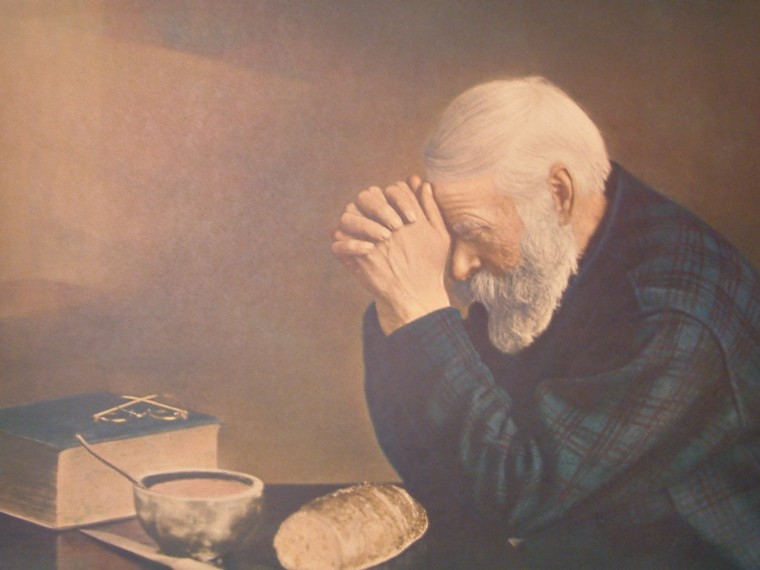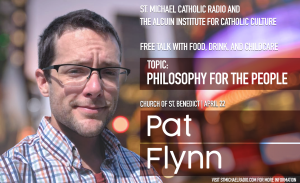3 Methods of Prayer

Before I start, let me say one thing: discovering how to pray is a lifelong adventure and the methods I describe below are a starting point, a map that can point us in the right direction.
Let us also remember that prayer is not rigid and full of formulas we must use. If we restrict ourselves to saying “100 Our Fathers and 400 Hail Marys” every day and look at going to daily Mass as another box on our “checklist” of prayer, we are missing the whole point.
Prayer, above all else, is a relationship. As Saint Therese so eloquently put it,
For me, prayer is a surge of the heart; it is a simple look turned toward heaven, it is a cry of recognition and of love, embracing both trial and joy (Story of a Soul).
This quote was deliberately put at the very start of the Catechism’s section on “What is Prayer” and should always be kept in mind. Prayer is always an action of the heart, as we cry out to God and lay before Him all of our needs and worries.
God is the bridegroom and we are all His bride. Prayer is the way in which we can respond to the bridegroom’s invitation to the wedding feast of the Lamb.
Also, prayer is an adventure in loving God. He leads us in different ways and almost never in the same way. He is always challenging us and beckoning us to follow Him to go “farther up and further in.” He is also the Lion of the Tribe of Judah and as C.S. Lewis depicted Him in the Chronicles of Narnia, “He’s wild, you know. Not like a tame lion.” God is wild in a good sense. One can not simply pin Him down and treat Him like a machine that dispenses candy; “If I pray 10 Rosaries today, my prayer will be answered.” God wants to teach us how to love him and love is always an adventure.
With that said, here are three methods of prayer that have the power to change your life. I am not saying that you must use these methods and do so in a systematic way. I am simply offering these to you to take on your quest to draw closer to the heart of God.
1. Heart to Heart
- The first method we should explore in prayer is a heart to heart conversation with God. It is the simplest and hardest way to pray. It consists of talking to God as if you were talking to the person you trust the most. This means not just talking about surface feelings, thoughts or desires, but more importantly talking about what is really bothering you in your heart. There might be a deep wound that is still there from your childhood or a real doubt that God exists because of a profound evil that has happened in your life. Above all else, takeeverything to God, especially the deepest desires and hurts of your heart.
- There is no formula in this method of prayer. It is a simple conversation with God, where we must speak, but also listen (and often the answer does not come immediately or in audible words).
2. Acknowledge. Relate. Receive. Respond (ARRR)
- This next method comes from the wisdom of Saint Ignatius of Loyola and those involved with the Institute for Priestly Formation. Jim Beckman sums them up in his book God, Help Me: How to Grow in Prayer
:
First we get in touch with what is moving in our hearts, particularly at the deepest level –acknowledge.
Second, we relate those movements to God in prayer.
Third, we listen and receive whatever he desires to give us in response to what we shared.
Finally, we respond to what we just received, which is typically a natural movement, not something forced or burdensome.
- By doing these actions, we speak to God and discern what He is doing in our hearts and respond to wherever He is leading us.
3. Lectio Divina
- A great way to start recognizing how God is speaking to us by way of the ancient practice of Lectio Divina. Pope Benedict XVI spoke about the importance of this art of prayer a few years ago
“I would like in particular to recall and recommend the ancient tradition of ‘Lectio divina’: ‘the diligent reading of Sacred Scripture accompanied by prayer brings about that intimate dialogue in which the person reading hears God who is speaking, and in praying, responds to him with trusting openness of heart’ (cf. “Dei Verbum,” n. 25). If it is effectively promoted, this practice will bring to the Church — I am convinced of it — a new spiritual springtime. (Source, emphasis added)
- Lectio Divina or “divine reading” is a method of prayer that involves reflecting on Sacred Scripture and immersing oneself in the scene, discovering what God wants to tell us in a specific passage. Here is a great resource that describes the various steps in Lectio Divina and gives a worksheet on how to do it.
- As a note, you can practice Lectio Divina on a daily basis by reading the daily readings for Mass or by simply walking through one chapter a day of the Gospels.
There are certainly many other methods of prayer, put these three are at the center of a deep relationship with God. We must not be afraid to be vulnerable with God and to talk to Him about all the cares and worries of our life.
I am sure after reading this you were hoping for something more complicated: a formula that said “Do this, this and this and you will experience a divine ecstasy.” Prayer is not like that. Prayer is like the story that Saint John Vianney relates of a parishioner. He found a man sitting in his church in front of the tabernacle and asked him what he was doing. The man famously responded,
“I look at him and he looks at me.”
That is prayer.
Certainly we can use formula prayers and we should. We should pray the Rosary every day, but that should not be the only type of prayer we engage in.
Remember, prayer is a relationship. It is an adventure. The real trick is allowing God to lead us and following Him with complete trust. We must have faith and hope that God knows what we need and that He knows the way to Eternal Life. In fact, He is the Way.

